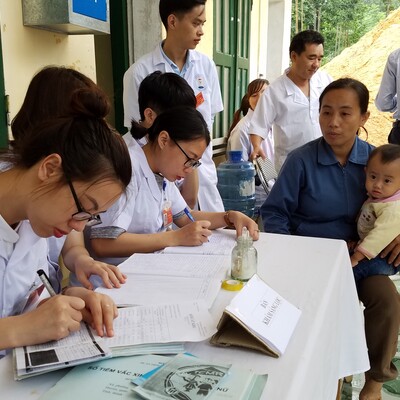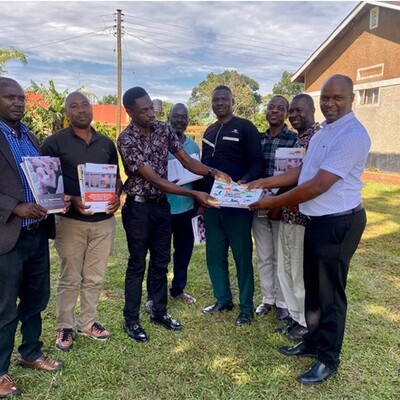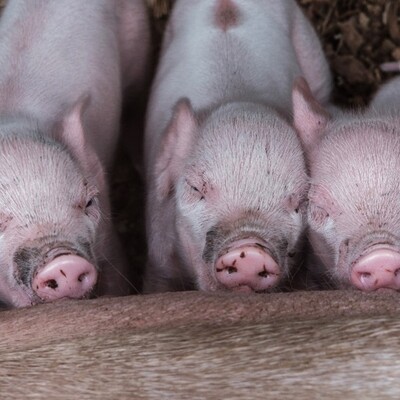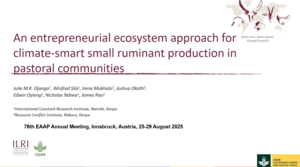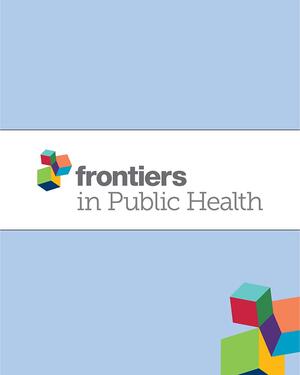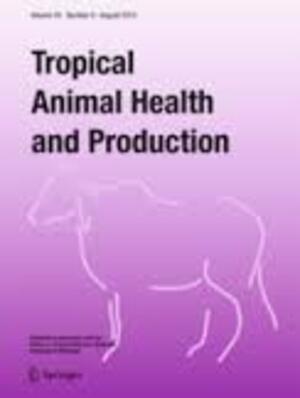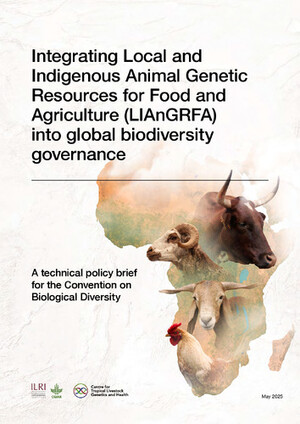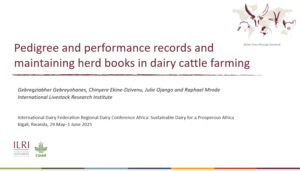
Upgrading indigenous genetic resources important for One CGIAR sustainable animal productivity initiative in Nepal
To implement its 2030 research and innovation strategy, the CGIAR is developing a series of initiatives designed to achieve a world with sustainable and resilient food, land, and water systems that deliver more diverse, healthy, safe, sufficient, and affordable diets, and ensure improved livelihoods and greater social equality, within planetary and regional environmental boundaries.
CGIAR initiatives are major, prioritized areas of investment that bring capacity from within and beyond CGIAR to bear on well-defined, major challenges.
Nepal is one of several countries identified to be part of the proposed Sustainable Animal Productivity for Livelihoods, Nutrition and Gender Inclusion (SAPLING) initiative. Still at an early stage, this initiative aims to enable one million livestock producers – especially women and youth - in 7 countries to engage in inclusive value chains and achieve sustainable productivity gains resulting in improved livelihoods. On 9 July 2021, the initiative design team joined with partners and collaborators in Nepal to review key elements of the proposed initiative, aiming to improve the proposal by:
1. specifying which elements and work packages are highest priority for Nepal
2. identifying missing elements that must be included for it to best serve Nepal’s situation
3. providing feedback to strengthen the proposed approach and framework
4. identifying the interests of key national actors in the initiative
In his opening remarks, Jean Balie, acting Regional Director for South Asia in the One CGIAR said that partnerships are essential mechanisms to facilitate co-design and co-delivery of innovations, capacity development and policy changes that propel evidence into impact. He added that the initiative will be working in the most marginal and poverty dense farming systems to test, adapt, target and position livestock and other technologies and practices among the next users while developing strategies to make agricultural value chains more inclusive by 2024.
ILRI’s Isabelle Baltenweck explained that the initiative is intended to enable livestock producers to participate in lucrative value chains and achieve sustainable productivity gains resulting in improved livelihoods. It aims to enable one million livestock producers – 50% women and youth – to engage in inclusive value chains and achieve sustainable productivity gains between 30-50%, resulting in improved household livelihoods and nutrition status.
Padmakumar Varijakshapanicker, ILRI representative in Nepal noted that the country’s poverty levels are relatively high with about 18.7% of the people living below the poverty line. About 4.6 million are classed as food insecure and 32% of the children (< 5 years age) are stunted. He pointed out that livestock production and animal source foods are critical in combating these challenges.
In Nepal, about 71% of farmers own livestock and poultry but the majority are smallholders who mostly keep a few chickens as well as some goats, pigs or buffalo. Padmakumar outlined some potential SAPLING work packages that could boost productivity and overcome low nutrition levels through innovations such as improved buffalo and goat genetics, herd health interventions, forage intensification and digital tools among others.
During the workshop, stakeholders provided feedback specifying the priority interventions, value chains and work packages that can best serve the Nepal situation.
Major livestock challenges in Nepal highlighted by the participants included: limited availability of good quality and productive animals, weak value chains for perishable animal source products, women not benefiting enough from livestock value chains, unfair prices and market systems for producers, and inadequate feed and health for livestock. Overall, the potential of livestock for better nutrition, improved and inclusive livelihoods and food security of smallholder farmers is not fully tapped.
Reviewing the key elements of the proposal, participants welcomed its integrated approach, it's targeting of gender and youth, its commitments to stakeholder engagement and its ambition to scale technologies and overcome gaps between science and practice. As well as the important focus on market development and smallholders, participants commended the technical focus on feeds, animal genetics, and the search for multi-disciplinary solutions that are environment-friendly. Key points recommended to include or improve were to focus more on local and indigenous animals, climate-resilient technologies, feed sources and practices; strengthen the one health focus; take more account of the local institutional landscape; strengthen private sector engagement; and make sure to include issues such as water and soils as well as linkages between crops and livestock (competition, trade-offs, harnessing synergies).
Priority interventions raised by participants included: involving diverse stakeholders to ensure scaling; promoting digital technologies; organising farmers to improve market access and competitiveness; a great emphasis on appropriate feeds and forages, feed drying technologies, feed management, crop residues and feed quality; targeting youth and women empowerment; livestock water productivity improvement pathways; genetic and reproductive improvement for productivity and resilience goals, especially of buffalo and goats.
Participants also offered guidance on priority value chains and locations for the initiative. The proposed focus on buffalo and goats was strongly supported. Poultry was recommended as a focus, especially for its potential to benefit women. In all cases, work on indigenous and local breeds and traits was recommended. For choice of locations, participants emphasized the importance of covering topographical regions from North to South to take care of the diversity, market systems and potential synergies with other initiatives and projects.
Finally, the session ended with a set of ‘advice’ to the team from participants covering the importance of participatory approaches, involvement of the three-tier structure (Federal, Provincial and local), a strong farmer focus, upgrading of existing genetic resources (livestock and forages), feed interventions, the entire food chain, inclusion, the local institutional landscape, market systems, and the right species focus – buffalo, goats, poultry, or indeed the mixes of these at the household level.
In his closing remarks, Dr Bimal Kumar, secretary of the Nepal Ministry of Agriculture and Livestock Development pointed out the need to align the project to the key areas where government work is ongoing, such as nutrition, agribusiness, technology and productivity. He added that it would be good to address markets since currently they are not well organised and farmers do not make the most out of them for their produce.
If approved, the initiative is expected to run for an initial three years, beginning in 2022. For more information please contact Padmakumar Varijakshapanicker V.Padmakumar@cgiar.org.
Materials from the meeting are available online: https://hdl.handle.net/10568/114663






